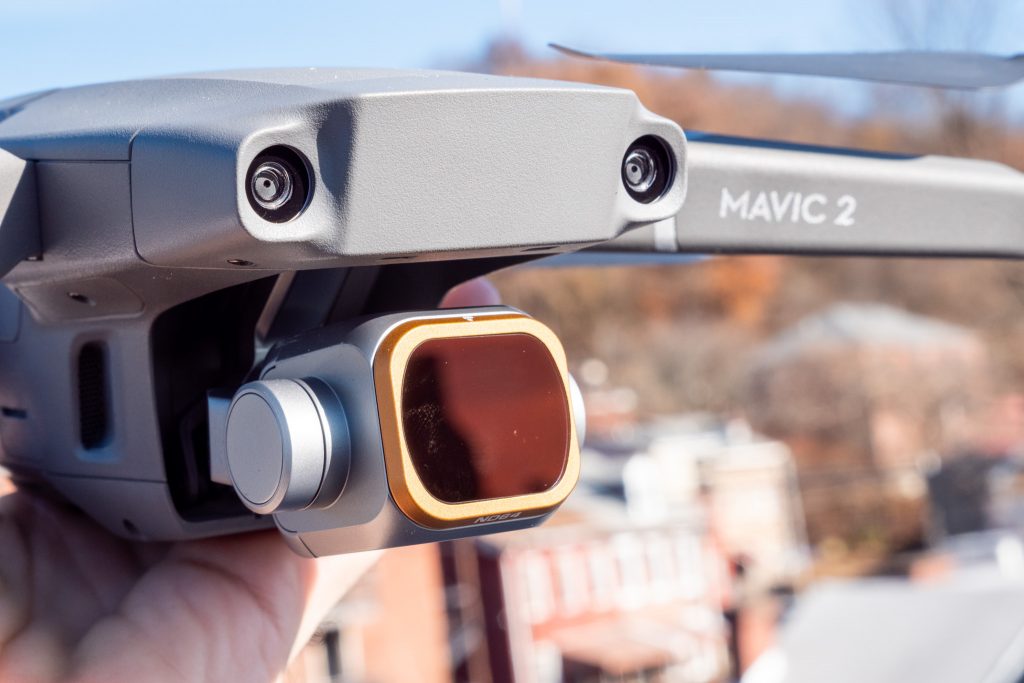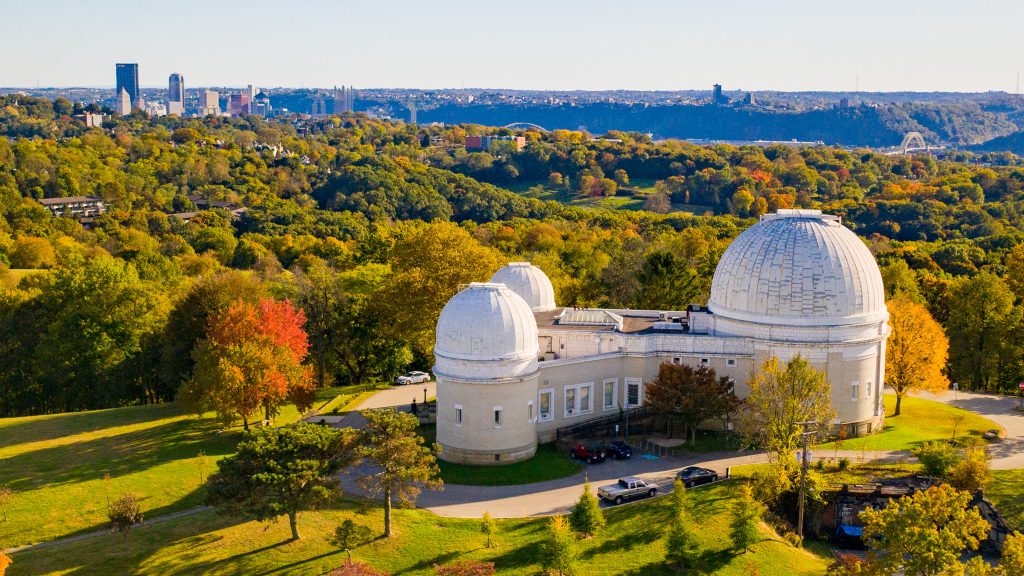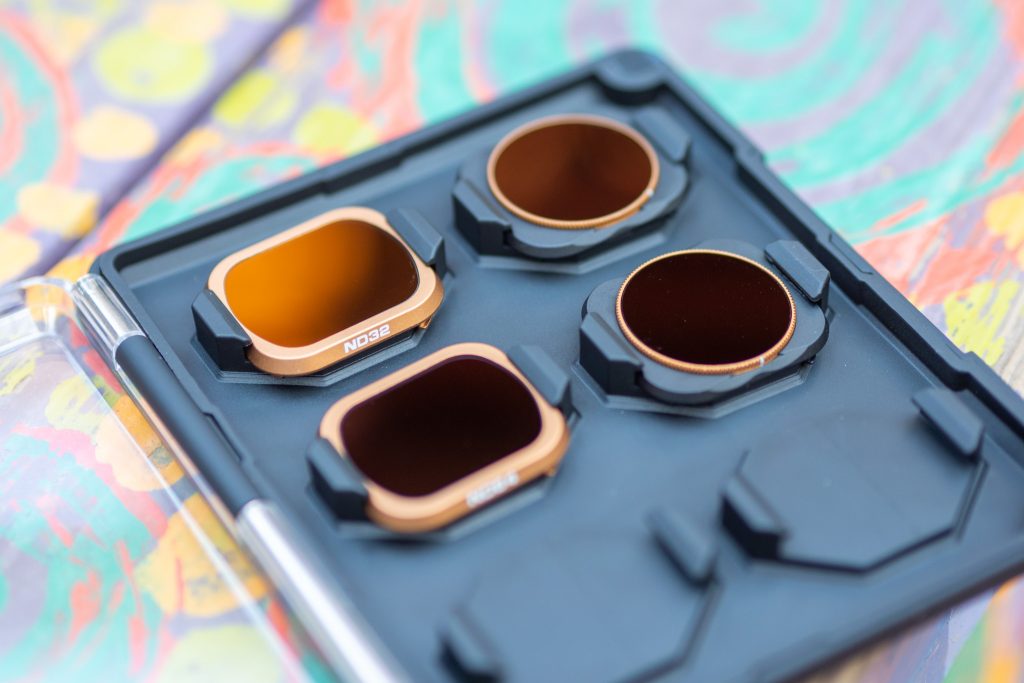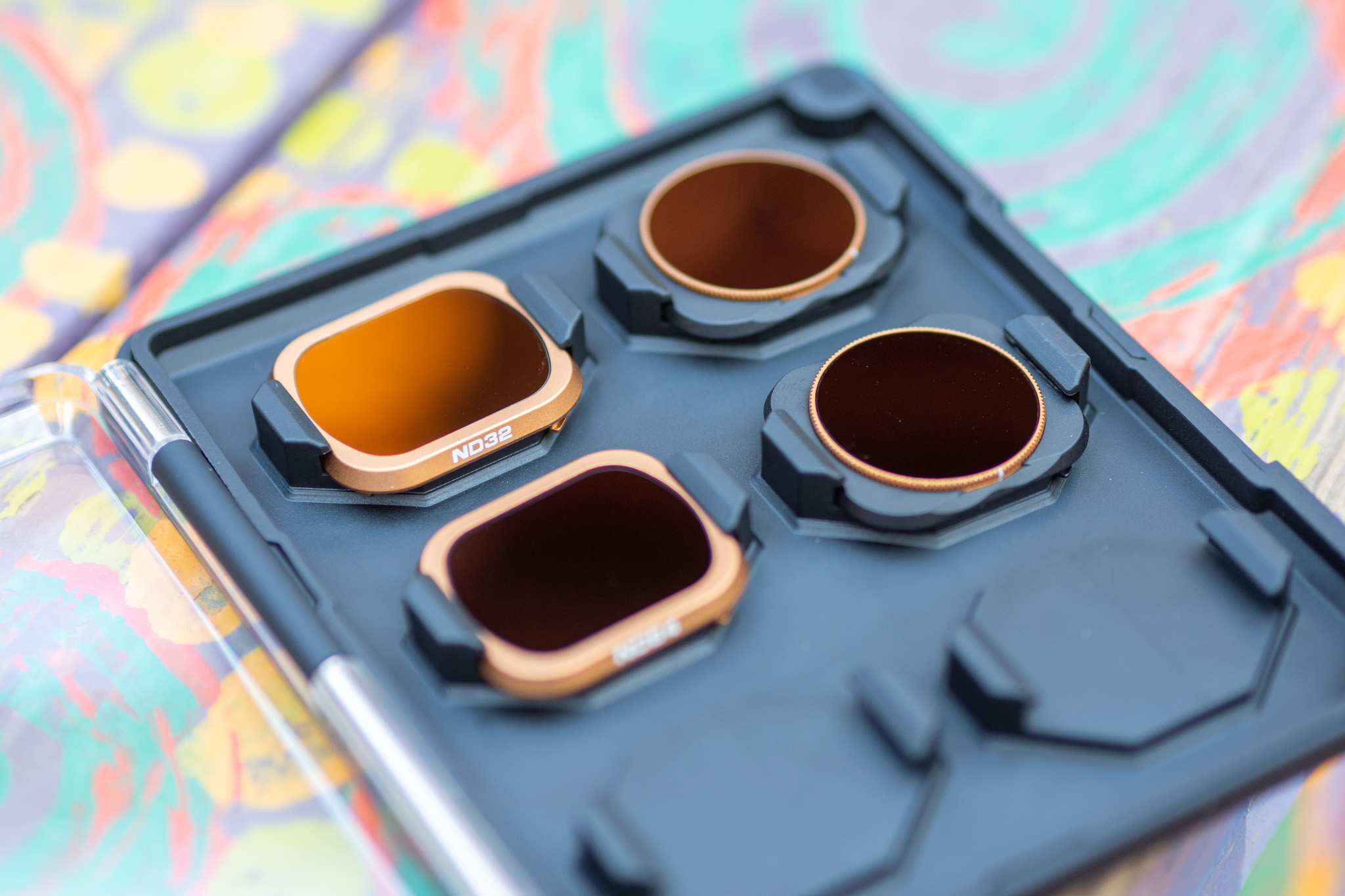Have you ever wondered why your videos don’t have that cinematic look? Chances are you’re not using an ND filter. A Neutral Density (ND) filter reduces the amount of light coming into your camera, or in this case drone’s camera, so you can get smooth shutter shutter speeds that give your footage that smooth cinematic look. PolarPro introduced a line of ND filters and here is our hands on look at them.
Full Disclosure: PolarPro did not provide us the filters. We’re testing out equipment from various friends we might want to use for our upcoming original series.
On the surface, the Mavic Pro 2 is a year after year upgrade we’ve become use to in the tech cycle. The numeric increase for most tech products land on a spectrum of small changes to large. For the Mavic Pro 2, it is the combination of small changes that make the drone a large upgrade. Removable joysticks for better packing, larger batteries with indicator displays, and the needed ability to attach filters directly to the new 10-bit Hasselblad sensor.

When you look at high-end camera equipment, which the Mavic Pro 2 is, you need to rethink the one product fits all. In cinematography, cameras are often seen as the base and the accessories emphasis what it can and can’t do. True, you can get the Mavic 2 Pro for $1250, it only becomes the beast you see in videos. To achieve that level of production, you will need a set of ND Filters. Simply put, a ND filters limits the amount of light the sensor receives. Cinematic motion blur requires double the shutter speed to frame rate or also known as 180d. Additionally, if you’re looking to do any time lapses during the day, you’ll definitely need to pick up a set. That’s what makes ND filters a requirement for any professional drone pilot.
The PolarPro Cinema Series Shutter Collection for Mavic 2 Pro is aimed at professional videographers who are looking for smooth footage. PolarPro’s line of filters is rather expansive going from ND4 to ND1000, which blocks so much light vampires could walk in the daylight. I tested the ND32/64 with respective Polarized versions for this.

The ND filters are aluminum and respective glass is thicker than I’ve come to expect from third party filters for Canon or Nikon. The first time removing the Mavic Pro 2 filters can be daunting, after all, you just spent a few thousand on the piece of equipment. But after a few tries, you’ll quickly get use to the pressure needed to turn the filters to remove and replace. The filters are hydrophobic, but remember fingerprint oil doesn’t care about that. Make sure you put a lens wipe in your traveling gear.
The resulting images and video from the PolarPro filters are nothing short than enchanting. Landscape flyovers at the correct shutter speed and ISO 400 truly make any novice footage feel majestic. The combination of right filters and setting turn vacation shots into a 4K experience fit for Discovery Channel. The filters turn vehicles into blurs during dusk time-lapses. Skys and lakes are pulled out by the polarized versions of the filters.

DJI didn’t include filters with the off the shelf Mavic 2. It’s odd, because it’s almost a requirement that signifies quality video – whether on YouTube or in Theatres. Any photographer will tell you to invest in glass. That said, PolarPro’s Cinema Series ND Filters is one of the best companion accessories for the Mavic 2. The only downside is certain sets are out of stock on Amazon. Make sure you pick the right ND rating when looking for the set.
